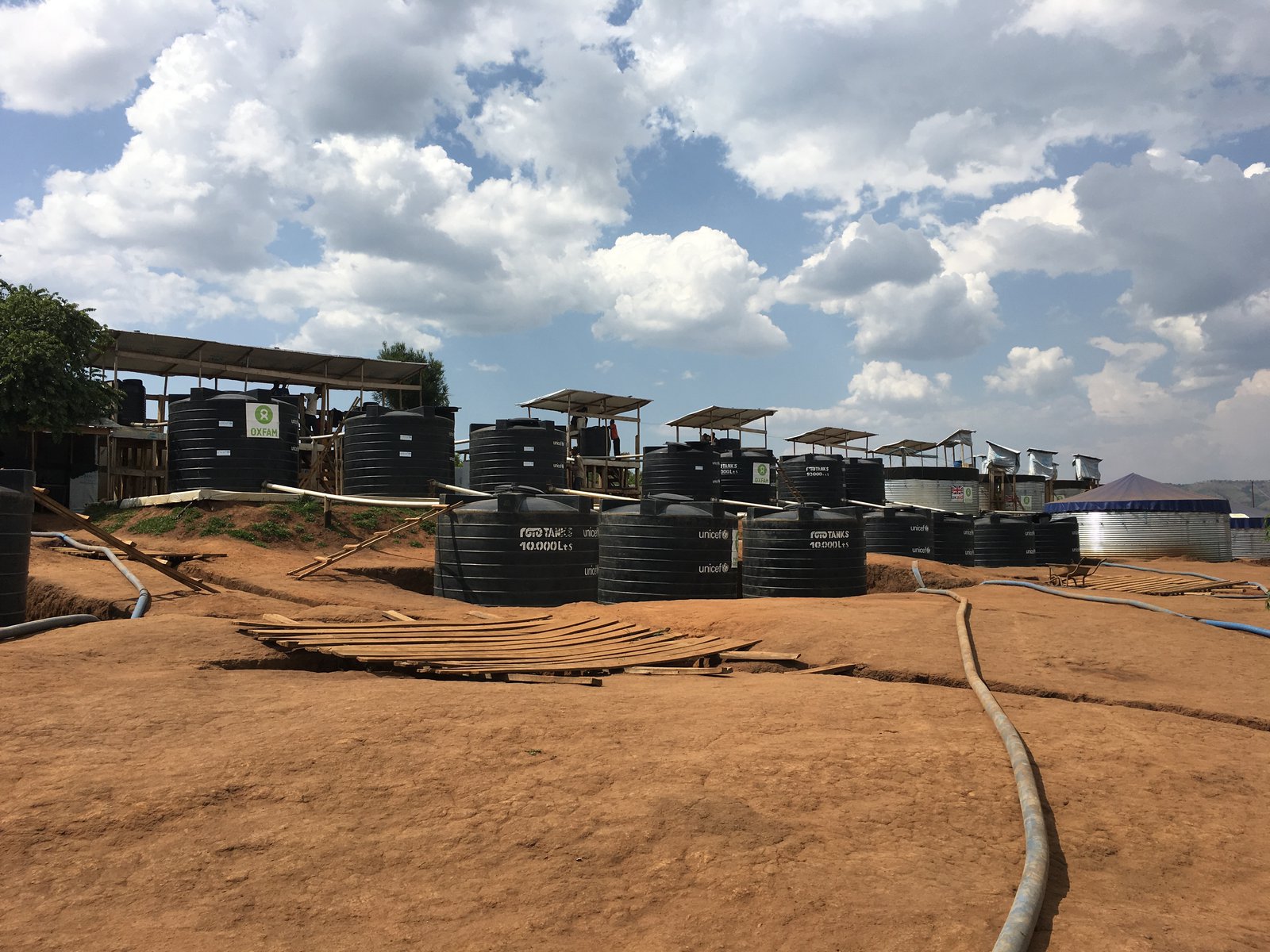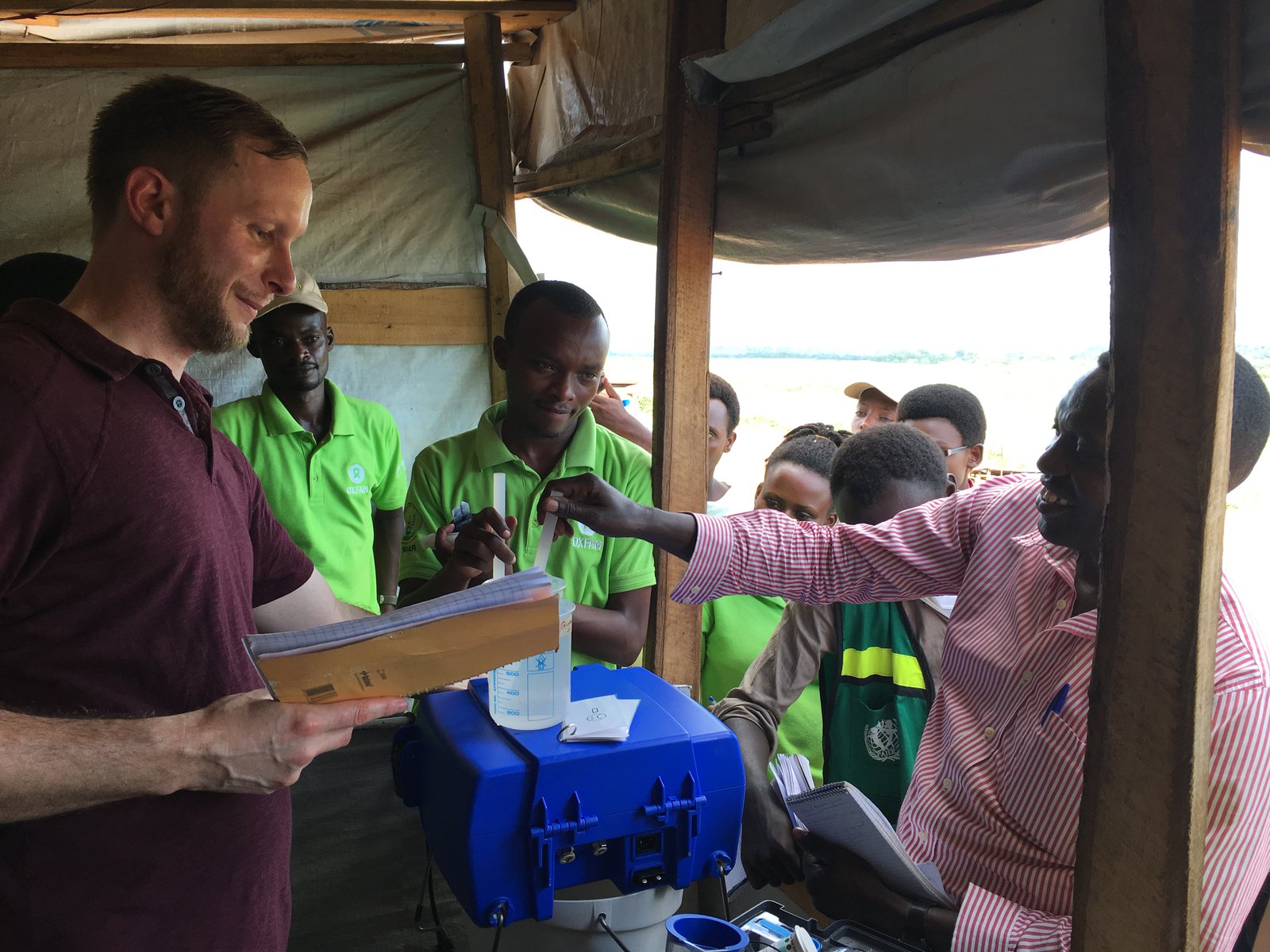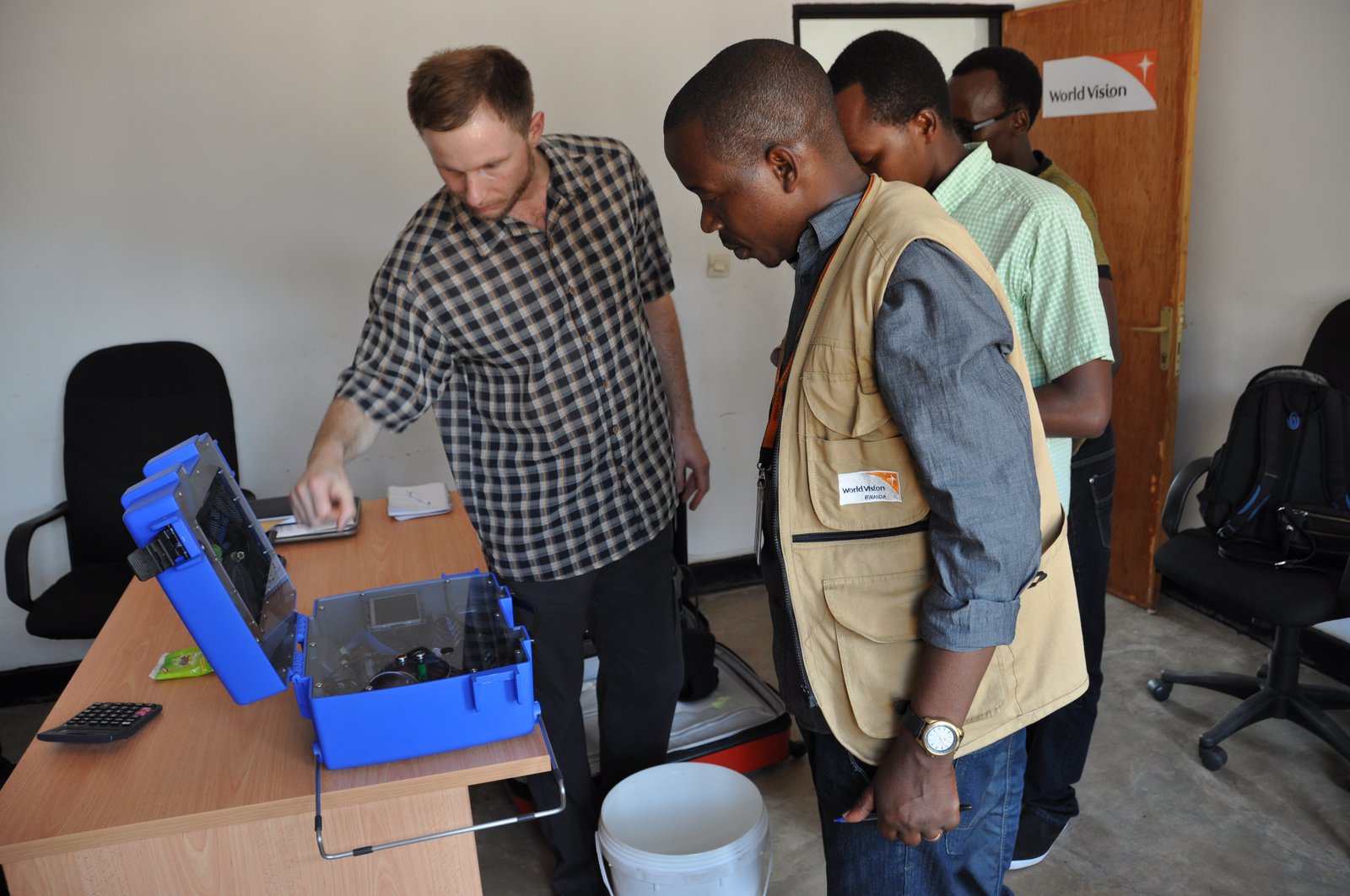The Kagera river flows through Mahama and then continues on as it bends and winds its way through a lush green valley. Although turbid, there is plenty of water in this area of Rwanda. And as the blue skies above are replaced by clouds, there’s promise for more.
The water was one of the reasons the Mahama camp was established here to accommodate an influx of Burundian refugees who had fled their homes during a time of unrest. But this camp, originally planned for a population of 10,000, is now well over capacity with estimates of nearly 55,000 people.

Like many refugee camps, Mahama has become a long-term home for many, resulting in a stressed infrastructure and compromised water systems. Photo: PATH/Jesse Schubert.
And as the temporary system bulges and expands, the most vulnerable residents—children, pregnant women, and the elderly—are at greater risk of exposure to waterborne pathogens and contaminants that can cause deadly diseases such as cholera.
The problem isn’t access to water, it’s making it safer

Children, pregnant women, and the elderly are at greater risk of exposure to waterborne pathogens and contaminants that can cause deadly diseases. Photo: PATH/Evelyn Hockstein.
“The minimum standard in relief settings is to provide 15 liters of water per person per day for drinking, cooking, and basic hygiene,” says Jesse Schubert,* a program officer at PATH who visited several camps in Kenya and Rwanda, including Mahama. “That is an enormous challenge to do for tens of thousands of people every day.”
Camps often have water plants that filter and treat the water with a chlorine solution made from a highly concentrated chlorine powder. The powder is considered a hazardous substance and supplies are not always reliable. There is also the added expense of buying and safely transporting it.

Most camps treat their water with chlorine to make it safe, but as it travels through a camp’s pipes and into containers, it can become recontaminated. Photo: PATH/Jesse Schubert.
“Most existing chlorine generators are designed for larger municipal-scale systems, installed by engineers, and operated by professionals,” says Jesse. “These larger systems require special parts, need regular maintenance, and can cost tens or hundreds of thousands of dollars.”
The cost alone puts this option out of reach in low-resource settings and refugee camps like Mahama. What these camps really need is an easy, low-cost, consistent way to produce safe water.
Safeguarding water where it’s used

Oxfam onsite staff in Mahama, Rwanda gather around Jesse Schubert (L) as he demonstrates a prototype of a portable chlorine generator that PATH and Mountain Safety Research developed. Photo: World Vision/Carole Abourached.
In partnership with Mountain Safety Research (MSR) Global Health, a Seattle-based product innovator and manufacturer, PATH developed the SE200 Community Chlorine Maker, a small portable chlorine generator that could rapidly produce enough chlorine to treat up to 53 gallons of water with only salt, water, and electricity. To address the need for safer water in refugee camps and emergency humanitarian responses, PATH, World Vision, and MSR set about developing a larger device, built on the same technology as the SE200. The result is the SE Flow Chlorine Generator [pdf].
“It’s not just a treatment innovation, it’s also a supply chain innovation,” says Tim Oriard, principle scientist at MSR Global Health. “Treating water with chlorine is nothing new. It’s about improving access in places with limited infrastructure and resources where people need it most.”

PATH staff travel to low-resource areas such as refugee camps to get a pulse on everything from user-needs assessments to implementation of field and lab-based prototype and product usability tests. Photo: World Vision/Carole Abourached.
Learn more about the award-winning SE200 Community Chlorine Maker, an innovative solution to generate chlorine for safe water treatment developed by PATH and Mountain Safety Research.
The PATH team brought a prototype of the SE Flow device during a trip to Rwanda and Kenya. The aim was to demonstrate its use in several camps and rural hospitals, as part of PATH’s human-centered design process to collect feedback directly from users to ensure the design will be appropriate and easy to operate. The newer device produces more chlorine solution than the smaller SE200, enough to treat up to 4000 gallons of water per hour—or to give 8,000 people 15 liters for their own use.
“Potential users of the SE Flow were clearly excited about the possibilities to easily and safely treat water and eliminate the reliance on chlorine supply chains,” says Jesse. “Generating chlorine on site has the potential to be more cost-effective than the standard practices. The price to operate the device for one hour is simply the cost of one cup of table salt and power from a generator or solar rechargeable battery.”

The device makes a chlorine solution through the process of electrolysis. A consistent 1 percent concentration of chlorine solution is produced at the push of a button which removes the risk of under- and overdosing and is much safer to use than highly co
“We’re still getting input on the device, but there was a great deal of interest about when it would be available. And several people were so excited about its potential that they asked if we could leave the device with them.”
“The price to operate one hour of the device is simply the cost of one cup of table salt and a power source.”
PATH is working to fulfill that request and will be sending refined prototypes to a host of countries and partners for field evaluations to get additional feedback. Once finalized and launched, this new chlorine generator will be poised for adoption by ministries of health and aid organizations for use in low-resource settings like refugee camps and rural health care facilities.
*Editor’s note: Jesse Schubert is a former member of the PATH team that recently won a Saving Lives at Birth award to evaluate how the SE Flow can improve levels of hygiene in labor wards and reduce the risk of infection for mothers and infants. To learn more, read our latest press release.
